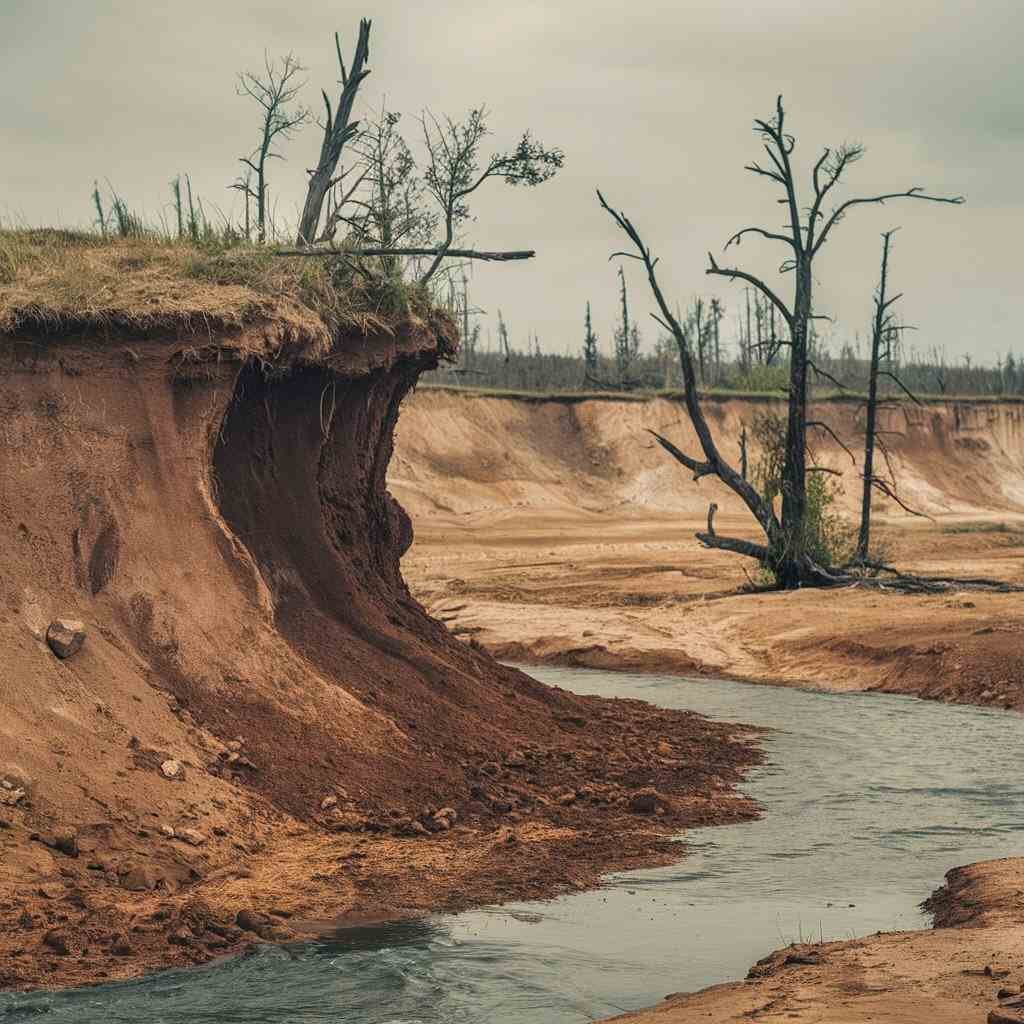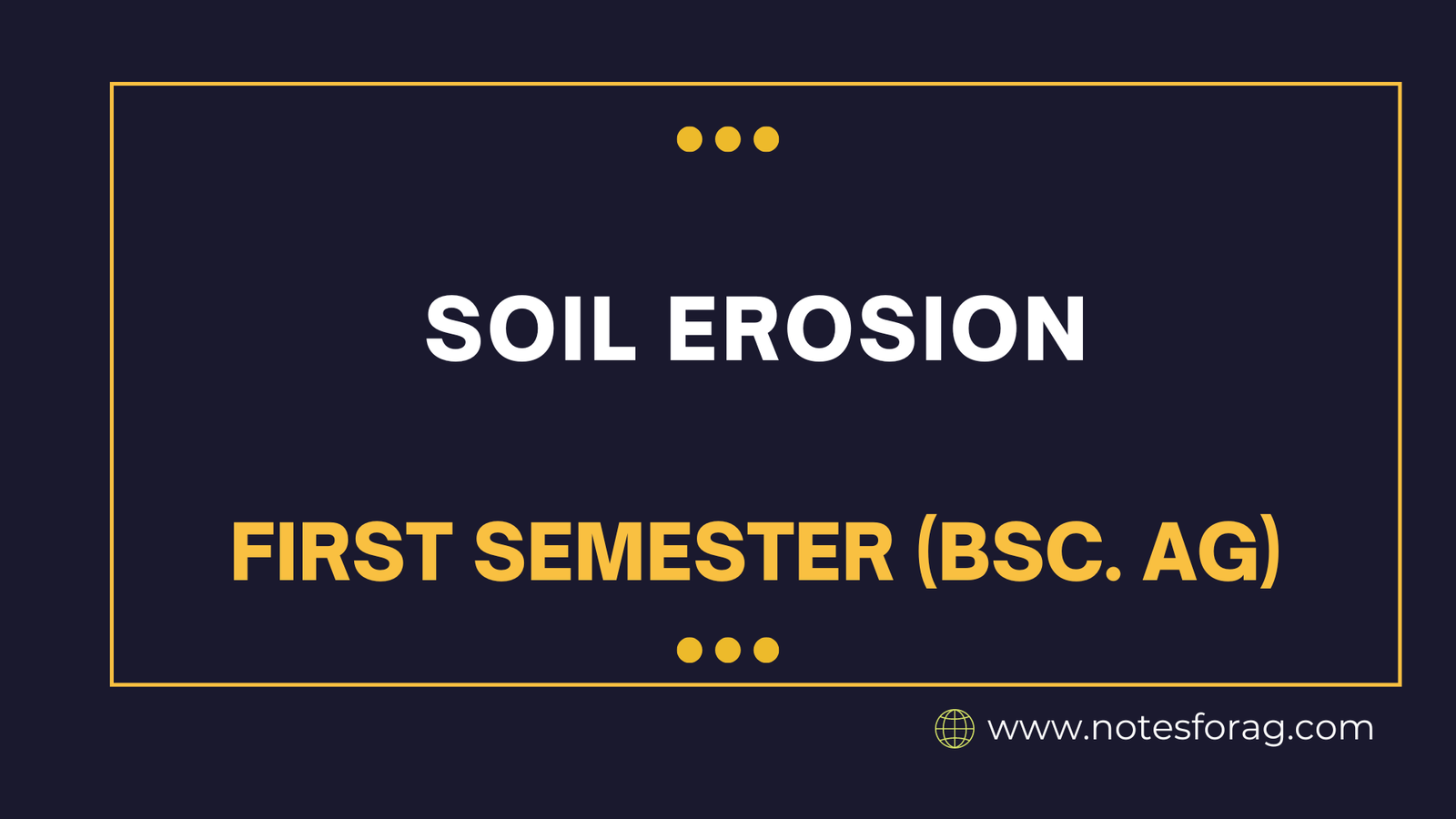Soil erosion occurs naturally when different factors, such as gravity, wind, or water, push soil particles aside and deposit them somewhere else. Though erosion is a normal aspect of geological cycles, construction, deforestation, and agriculture are examples of human activities that can quicken the rate of erosion. This results in environmental problems such sedimentation in water bodies, loss of productive topsoil, and deterioration of land productivity. For sustainable land management, soil erosion is a major concern since it can have negative effects on ecosystems, agriculture, and water quality.
Table of Contents
Definition of Soil Erosion
The process by which soil particles are separated, carried, and deposited somewhere else by wind, water, or gravity is known as soil erosion. Although it is a natural geological process, human activities like construction, deforestation, and agriculture can hasten the pace of erosion, which degrades the productivity of the land and causes the loss of fertile topsoil.

Types of Soil Erosion
1. Water Erosion:
- Sheet erosion: Surface runoff and rains cause uniform soil loss in thin layers.
- Rill Erosion: When runoff concentrates and erodes the soil, tiny channels are formed.
- Gully Erosion: Excessive runoff causes gullies or channels to grow.
- Streambank Erosion: Soil erosion from streambanks brought on by the force of water flow.
2. Wind Erosion:
- Mostly takes place in arid and semi-arid areas.
- Topsoil and nutrients are lost when loose, dry, and sandy soils get dislodged and carried by high winds.
3. Gravity Erosion (Mass Movement):
- Involves the rock and dirt moving downward as a result of gravity.
- Causes rockfalls, mudslides, and landslides.
Factors Affecting Soil Erosion

- Climate: Seasonal fluctuations, wind speed, and rainfall intensity and frequency all have an impact on erosion rates.
- Soil Characteristics: The organic matter concentration, permeability, texture, and structure of the soil all affect how susceptible it is to erosion.
- Topography: The potential for erosion is determined by the length and steepness of the slope; steeper slopes are more likely to experience erosion.
- Vegetation Cover: While vegetation cover protects against raindrop impact and lowers surface runoff, plant roots stabilize the soil.
- Land Use and Management Practices: Construction projects, deforestation, overgrazing, and agricultural methods can all hasten the pace of erosion.
Losses Due to Soil Erosion
- Loss of Topsoil: The rich, organic matter- and nutrient-rich upper layer of soil that is vital for plant growth is gone due to erosion.
- Nutrient Depletion: As a result of erosion, soil fertility and agricultural yields are decreased due to the loss of nutrients.
- Sedimentation: When eroded soil particles end up in water bodies, they can have an impact on aquatic habitats and water quality.
- Decreased Water Quality: Pollutants and sediments from eroded soils can be carried by runoff into rivers, lakes, and reservoirs, resulting in a reduction in water quality.
- Loss of Arable Land: Land that is subject to constant erosion may become unusable for farming.
- Infrastructure Damage: Roads, bridges, and buildings can be undermined by erosion, increasing maintenance costs and creating safety risks.
Conservation Practices
- Vegetative Cover: To prevent soil erosion, maintain or introduce vegetation, such as trees, cover crops, and grasses.
- Contour Plowing: On sloped ground, plowing along contour lines minimizes runoff and soil erosion.
- Terrace construction: To lessen erosion and delay water flow, terraces are built on steep slopes.
- Mulching: On prevent erosion, hold onto moisture, and enhance soil health, apply organic or synthetic mulch to the soil’s surface.
- Conservation Tillage: Using no-till or minimal-tillage techniques to preserve soil organic matter and structure.
- Grassy Waterways: Planting green spaces to transfer surface runoff and lessen erosion.
- Riparian Buffers: Vegetation planted beside water bodies to prevent erosion, reinforce banks, and filter sediments.
In conclusion, soil health and agricultural productivity are seriously challenged by soil erosion, which is caused by gravity, wind, and water. Climate, soil properties, terrain, vegetation cover, and land use practices are some of the elements that affect the various types of erosion, which include sheet, rill, gully, streambank, wind, and gravity erosion. Loss of productive topsoil, nutrient depletion, sedimentation of water bodies, decreased water quality, loss of arable land, infrastructural damage, and biodiversity loss are some of the effects of soil erosion.
However, erosion may be efficiently reduced, soil resources can be preserved, and sustainable land management can be encouraged by putting conservation measures like vegetative cover, contour plowing, terracing, mulching, conservation tillage, and the use of sediment control structures into practice.
Frequently Asked Question(FAQ)
What is soil erosion?
The process by which soil particles become separated, moved, and deposited by wind, water, and gravity is known as soil erosion. It may result in the depletion of rich topsoil, which would be detrimental to the environment and agriculture.
How does soil erosion affect agriculture?
Depleted of nutrients, soil fertility is lowered, crop yields are decreased, and the productive topsoil is removed due to soil erosion. Aside from raising the price of agricultural production, it may result in the loss of arable land.
Related Articles

